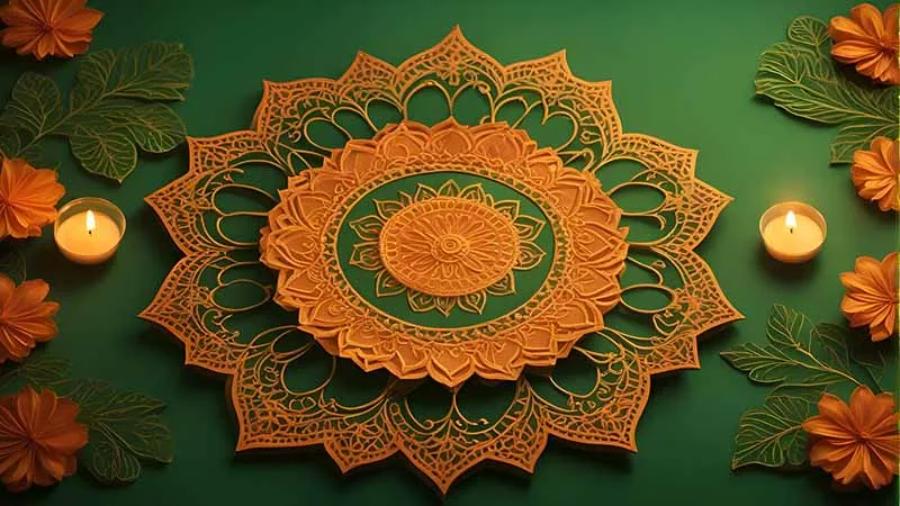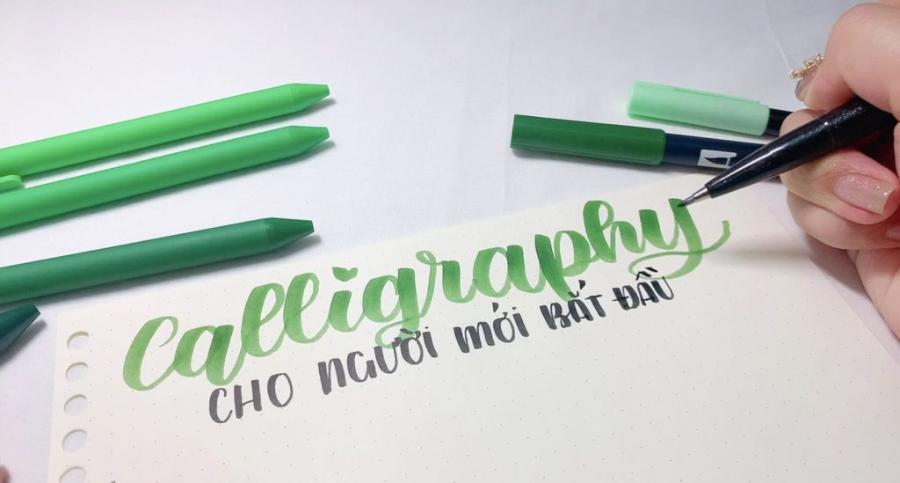Best Selling Products
5 elements that make a photo "pleasing to the eye"
Nội dung
- 1. Light – The Soul of Photography
- 1.1 The role of light in visual emotion
- 1.2 The "golden" time of day
- 1.3 Controlling light in a studio environment
- 1.4. Basic types of lighting and visual effects
- 1.5. Light quality: Softness, direction and intensity
- 2. Layout – Structure that guides the eye
- 2.1. The importance of composition in guiding the viewer's eye
- 2.2 Rule of Thirds
- 2.3. Leading lines
- 2.3 Symmetry and balance
- 2.4 Unconventional layout – when rules are broken properly
- 3. Color – Emotional Connection
- 3.1. The expressive power of color in photography
- 3.2 Contrasting color system – creating highlights
- 3.3 Monochromatic color – keep it simple and elegant
- 3.4 Applying the color wheel
- 4. Emotion – The “hidden” factor that guides viewers
- 4.1 Character's eyes and expressions
- 4.2 Truth in the moment
- 4.3 Visual storytelling
- 5. Post-production – The indispensable finishing step
- 5.1 Light and color correction
- 5.2 Detail processing – sharpness and noise
- 5.3 Balance between “raw material” and “neatness”
- 6. Conclusion
Discover the 5 key elements that make a great photo: light, composition, color, emotion, and post-production. Tips to help you improve your professional photography skills.

A beautiful photo does not only come from an expensive camera or modern editing software. Behind a “pleasing to the eye” frame is a harmonious combination of many important visual elements. From light, composition, color to emotion and post-production, every detail contributes to creating the perfect visual experience for the viewer. This article will analyze 5 key factors that determine the appeal of a photo, helping you improve your photography skills and effectively convey messages through images.
1. Light – The Soul of Photography
Light is the most important element in photography. Whether natural or artificial, the way you handle light directly affects the mood, depth, and sharpness of a photo.
![]()
(1).jpg)
1.1 The role of light in visual emotion
Lighting shapes the mood and atmosphere of a photo. Soft light often creates a gentle, soothing feeling, suitable for portraits, landscape photos in the early morning or late afternoon. In contrast, hard light with distinct shadows creates a strong, dramatic feeling, often used in fashion photos or black and white photos.
1.2 The "golden" time of day
The time of day you take a photo has a big impact on the light. The “golden hour” – about 1 hour after sunrise and 1 hour before sunset – is highly regarded by photographers. At this time, the light is soft, with a warm yellow hue, creating depth and highlighting for the subject without too much editing.
1.3 Controlling light in a studio environment
For indoor photography, the photographer must control the light using equipment such as flash, softbox, and reflector. The placement of the light, the direction of the light, and the distance from the light source to the subject will determine the contrast and emotion in the frame.
Shape and Line: Light helps shape a subject, highlighting curves, edges, and details. The contrast between light and dark areas creates depth and visual interest.
Conveying Emotions: Light has a powerful ability to evoke different emotions. Soft, warm light can create a calm, romantic feeling, while strong, high-contrast light can create drama and power.
Deciding on color: Lighting directly affects how we perceive color. Daylight can make colors appear bright and true, while yellow afternoon light can give them a warm, classic look.
Creating emphasis and focus: By adjusting the direction and intensity of light, photographers can highlight the main subject and draw the viewer's attention to important details.
Affects exposure: Light is the key factor in determining exposure parameters (aperture, shutter speed, ISO), ensuring the photo is not too bright (overexposed) or too dark (underexposed).
1.4. Basic types of lighting and visual effects
There are two main sources of light that photographers typically work with: natural light and artificial light. Each offers its own unique characteristics and effects.
Natural Light: Pure Beauty from Nature
Natural light is the light available from the sun, moon and sky. It provides a variety of colors, intensity and direction depending on the time of day and weather conditions.
Direct Sunlight: Strong, creates sharp shadows and high contrast. Often used to highlight texture and shape. However, harsh midday light can create deep shadows and lost detail.
Diffused light: Occurs when sunlight is obscured by clouds or shines through a frosted window. This type of light is soft, minimizes shadows, and creates an even distribution of light across the subject, making it ideal for portraits and still lifes.
Reflected light: Light that bounces off surrounding surfaces such as walls, water, or reflective paper. It can be used to brighten dark areas and create softer light.
Backlight: Subject is lit from behind. Can create a dramatic silhouette effect or rim light to highlight the outline of the subject.
Sidelight: Light coming from one side of the subject, creating contrast between light and dark areas, highlighting texture and depth.
Artificial Light: The Power of Control and Creativity
Artificial light is a man-made light source, including flash, studio lights, LED lights, and many others. The main advantage of artificial light is complete control over the intensity, direction, color, and quality of light.
Flash: A powerful light source, often used to "freeze" motion, illuminate in low light conditions, or create special effects.
Studio lights (strobes): Usually have more power than camera flashes, allowing more precise control of light and the use of accessories such as softboxes and umbrellas to shape the light.
Continuous light: Includes LED lights, halogen lights, etc. Allows photographers to see the lighting effect directly before shooting, useful for filming and still life photography.
Specialized lights: Ring lights (create even, shadowless light for close-up portraits), follow spot lights (create focused highlights), etc.
1.5. Light quality: Softness, direction and intensity
The quality of light is an important factor in determining the beauty of a photo. It includes:
Softness: Soft light produces soft or no shadows, often preferred in portraiture to smooth skin and minimize blemishes. Hard light produces sharp shadows and high contrast, good for highlighting texture and shape.
Direction of light: The direction of light relative to the subject and camera creates different visual effects. Front light hits the subject directly, creating a flat, depthless effect. Side light, backlight, and angled light create more variety and drama.
Intensity: The amount of light hitting the subject. Strong light intensities can cause glare and loss of detail, while weak intensities can make the photo appear dark and lacking in energy.
2. Layout – Structure that guides the eye
Composition is the skeleton of a photograph. A good composition makes it easy for the viewer's eye to follow and grasp the message the photographer wants to convey.
(1).jpg)
2.1. The importance of composition in guiding the viewer's eye
Create emphasis: Composition helps highlight the main subject and draw the viewer's attention to the most important elements in the photo.
Directing the eye: The lines, shapes, and positions of elements in the frame can guide the viewer's eye along a certain path, discovering the story the photo is trying to tell.
Create a sense of balance and harmony: A well-arranged layout gives a sense of stability and comfort to the viewer.
Conveying Emotions and Messages: Layout can contribute to creating different emotions, such as calm, dynamic, spacious or cramped.
Create Depth and Space: By arranging elements in different layers (foreground, midground, background), composition can create a sense of three-dimensional space in a two-dimensional photo.
2.2 Rule of Thirds
This is a classic compositional principle. The photo is divided into 9 equal parts by 2 vertical lines and 2 horizontal lines. Placing the subject at the intersections of these lines makes the image more balanced, natural and harmonious.
How to apply:
Visualize or use the grid displayed on the camera to divide the frame into thirds horizontally and vertically.
Place the main subject or points of interest along one of these lines or at their intersections.
Use these lines to arrange other elements in the frame, creating balance and leading the eye.
2.3. Leading lines
Leading lines are lines in a frame (such as roads, fences, rivers, mountains) that direct the viewer's eye to the main subject or another important point in the photo. They create a sense of depth and movement in the photo.
How to apply:
Look for natural or man-made lines in the scene.
Arrange the composition so that these lines start in the foreground and lead the eye toward the subject or point of interest.
Use curves or straight lines to create different leading effects. Curves feel soft and graceful, while straight lines feel strong and direct.
2.3 Symmetry and balance
Symmetrical compositions create a sense of stability and dignity. However, they do not have to be perfectly symmetrical. Visual balance can be achieved by using color, light, or shape to create harmony between areas in the image.
How to apply:
Look for subjects or scenes that are symmetrical.
Place a line of symmetry in the middle of the frame to create two equal and mirrored sections.
Symmetry can be broken with a small element to create interest and emphasis.
2.4 Unconventional layout – when rules are broken properly
Once the basics are mastered, photographers can experiment with unconventional compositions. Deliberately placing the subject off-center, cropping close to the face, or using unusual angles can create powerful and striking visual effects.
3. Color – Emotional Connection
Color is a factor that directly affects visual perception. Smart use of color can highlight the subject, shape the emotion and create a unique style for the photo.
(2).jpg)
3.1. The expressive power of color in photography
Evokes emotions: Each color is often associated with certain emotions. For example, red can represent passion, energy, or danger; blue evokes peace, trust, or sadness; yellow conveys joy, optimism, or warmth.
Creating Atmosphere and Mood: The overall color palette of a photo can create different moods, from bright and vibrant to quiet and somber.
Attention-grabbing: Bright, high-contrast colors are often the first things that catch the viewer's eye.
Conveying a message: Colors can carry different cultural and symbolic meanings, which contribute to the message of the photo.
Create visual emphasis: A bold color against a subdued palette can become a key focal point in a photo.
3.2 Contrasting color system – creating highlights
Combining contrasting color pairs such as blue-orange, red-green makes the photo more vivid and attractive. These color pairs are often used in portraits, fashion or product advertising.
3.3 Monochromatic color – keep it simple and elegant
Using a dominant color scheme will help your photos look unified and pleasing. Monochromatic photos often give a luxurious, classic, or somber feel. Pastel, beige, or cool tones are popular in art and lifestyle photography.
3.4 Applying the color wheel
Understanding the color wheel helps photographers choose the right color scheme, thereby better controlling the emotions of the photo. The 60-30-10 ratio (main – secondary – accent) is often used to keep the color scheme reasonable and not confusing.
4. Emotion – The “hidden” factor that guides viewers
A technically perfect photo is not necessarily “eye-catching” without the emotional element. Emotion is the soul, the message that the viewer feels from seemingly very small details.
(1).jpg)
4.1 Character's eyes and expressions
In portrait photography, the eyes are the most powerful element to convey emotion. A gaze that has depth will make an immediate impression. A natural, unforced expression makes the photo more genuine and easy to touch the viewer's heart.
4.2 Truth in the moment
Photos that capture the moment – unstaged – always feel more alive and authentic. Moments like spontaneous smiles, thoughtful glances, or intimate gestures are often highly valued in street photography, wedding photography, or journalism.
4.3 Visual storytelling
A photo that tells a story will stay in the viewer’s mind longer. The arrangement of elements in a photo helps the viewer understand the emotional flow, thereby creating a connection between them and the image.
5. Post-production – The indispensable finishing step
Post-processing is the process of finalizing an image. While it can’t replace the actual light or emotion, it can help to highlight what the photographer wants to emphasize.
5.1 Light and color correction
Software such as Lightroom, Photoshop or Capture One allows users to adjust brightness, contrast, and color to make the photo clearer or follow the desired color tone. However, you should avoid overusing it so that the photo does not lose its naturalness.
5.2 Detail processing – sharpness and noise
Sharpening makes photos clearer, but overdoing it can create harsh and unpleasant effects. On the other hand, noise removal needs to be done carefully, especially in low-light photos.
5.3 Balance between “raw material” and “neatness”
Keeping a little bit of roughness, film grain or natural light helps the photo not be too "fake" and still retain the original emotion. Post-production needs to consider between technique and emotion, avoiding making the photo "fake" or losing its own character.
6. Conclusion
A “pleasing to the eye” photo is not a random product but the result of a harmonious combination of light, composition, color, emotion and post-production. Each element plays a separate role, complementing each other to create a complete whole. When mastering these elements, the photographer does not stop at capturing a moment but can also tell a story, convey a message and touch the viewer’s emotions. At that moment, photography is no longer a simple recording tool, but has become an art with profound humanity.












































